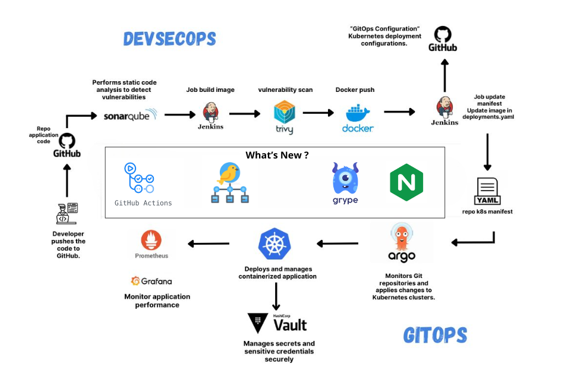
"In my previous article - Build a Secure DevSecOps CI/CD Pipeline with Jenkins, ArgoCD, Trivy, and Vault - I demonstrated building a production-ready pipeline that embedded security and GitOps principles from the ground up. But DevOps isn't static. Threats evolve, tools mature, and teams need pipelines that scale with them. The real challenge isn't just building a pipeline once - it's continuously improving it based on production experience and evolving requirements."
"Quick Recap of Part 1 We built a strong foundation with: Core Architecture: Jenkins CI/CD, ArgoCD GitOps, Trivy scanning, Vault for secrets Security-first approach: Multi-stage scanning, zero-trust secrets, policy-as-code GitOps Workflow: Code Push → Jenkins Build → Security Scans → ArgoCD Sync → K8s Deploy → Monitoring This pipeline supported multiple applications across teams in development and early production."
Production CI/CD pipelines must evolve as threats change, tools mature, and requirements scale. Prerequisites include Kubernetes cluster access and a GitHub repository with Actions enabled and admin permissions. The existing foundation combined Jenkins CI/CD, ArgoCD GitOps, Trivy scanning, Vault secrets, multi-stage scanning, zero-trust secrets, and policy-as-code, with a GitOps workflow from code push to Kubernetes deployment and monitoring. The pipeline evolution emphasizes migrating CI to GitHub Actions, strengthening security and secrets management, adopting progressive delivery via canary deployments, and exposing applications with an Ingress controller to improve resilience and scalability.
Read at Medium
Unable to calculate read time
Collection
[
|
...
]